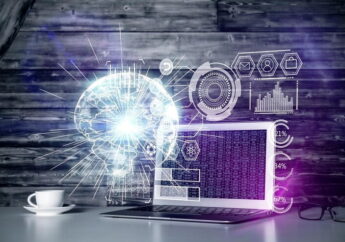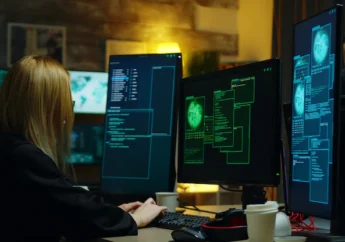AI Object Detection – Why Is It Important
by Abdul Aziz Mondal Business Intelligence Published on: 22 July 2022 Last Updated on: 24 September 2024

Innovation in the field of AI has made significant progress over the past few years. Artificial intelligence object detection is one such breakthrough worth paying attention to.
It refers to the ability of a computer program to notice patterns in video or pictures that correspond to objects that can be found in the real world.
This technology will greatly impact everyday lives and how both public and private entities operate.
Here is a brief guide on what object detection AI is, why it’s important, and how it will continue being a useful technology
What Is Object Detection AI?
Object detection AI is a technology that enables machines to identify objects in digital images or videos. This can be done by analyzing the pixels in an image to find patterns that match known objects.
For example, a computer might detect a human face by looking for certain facial features like eyes, nose, and mouth.
Object detection AI is enabled by machine learning, which trains computers to spot patterns in data. You may have seen this recently with social media face recognition technology – it’s now possible for machines to recognize faces on their own with near-human accuracy.

Here are seven ways object detection AI is changing both corporate and non-corporate worlds;
1. Visual Product Search
Imagine you’re out shopping for a new dress. You see one you like in a store window, but it’s not your size. So you pull out your phone, take a picture of the dress, and within seconds your phone shows you similar dresses that are available in your size, along with their price and where to find them. This is the power of object detection AI in action.
Search engines are also deploying object detection AI to make looking for things on the internet easier. For example, when you upload an image to a search engine and click Search by Image, the search engine automatically detects what’s in the photo so you can find similar images or products without entering any keywords or tags.
2. Security Applications
Facial recognition is one of the most well-known applications of object detection AI. It can be used for security purposes, such as at airports.
By scanning faces in a crowd, object detection AI can pick out individuals that may be on a watch list or wanted by the authorities. This technology is becoming increasingly commonplace as airports look to improve their security measures.
Object detection is also making intrusion detection systems more effective; this system employs motion sensors to detect people or vehicles coming onto a property uninvited.
More sophisticated intrusion detection systems use cameras and other sensor devices to determine if someone is trying to get into an area they shouldn’t be in. The information from these sensors can then be processed by object detection AI algorithms which alert the operator when suspicious activity occurs.
3. Medical Applications Analyzing Images
In the medical field, object detection can help doctors diagnose diseases. For example, by analyzing an ultrasound scan, a doctor can detect whether a fetus has a heart condition.
In addition, CT scans can be used to detect tumors, while MRIs can be used to detect brain damage. As a result, doctors can make more accurate diagnoses and save lives using object detection AI.
This technology complements human knowledge because whereas the doctor can infer certain diagnoses, AI can use a large data set of information that it has learned to draw conclusions faster than a person can do with fewer data.
4. Visual Listening on Social Media
With the advent of social media, the ability to listen and see what people are saying has become increasingly important. After all, a picture is worth a thousand words. And that’s where object detection comes in.
You can set up object detection to see how often your logo or trademark appears on social media. From this, you can garner insights such as the area where a product is popular, events in which it is most consumed, and even cases of misuse of your branding.
While keyword listening has been more prevalent, visual listening will become more preferred because it shows the product already in use, which offers more actionable data.
5. Inventory Management
Empty shelves are one of the customers’ most common pain points and lost revenue for businesses. By keeping track of objects in real-time, you can always know exactly what’s on your shelves and where it is.
Integrating in-store cameras with object AI software will help keep tabs on the real-time state of Stock Keeping Units (SKUs). It also means that inventory management tasks like identifying out-of-stock items and excess inventory (for product promotion) become more efficient.
When items do go missing, object detection systems enable speedy responses to potential theft by alerting store staff to any unaccounted-for SKUs as soon as they happen – meaning a quicker response time to make things right for your customers.
Conclusion
The applications of object identification AI in today’s life are plentiful. Its use in public and private entities will only expand as the tech improves with stronger AI. It will play a big role in improving efficiency and accuracy in dealing with visual data. It promises to be the frontline in the continued deployment of AI technologies.
Additionals:



































































































